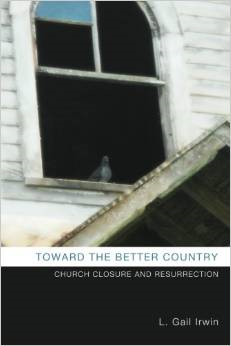 Since the Supreme Court ruling on same-sex marriage last week, I’ve found myself reminiscing about one of my previous churches.
Since the Supreme Court ruling on same-sex marriage last week, I’ve found myself reminiscing about one of my previous churches.
This was a church in which roughly half the active members were gay and lesbian Christians, many with partners and children. Back in the 90’s, word had gotten out around town that this church was “welcoming” of all. We were not a “More Light” church or an “Open and Affirming” church. Our members merely wanted a safe place to worship God, a place where being gay and being Christian didn’t have to collide with each other.
My tenure at that church fell during the years that openly gay Christians were not considered eligible for ordination as lay leaders or clergy in the Presbyterian Church. And the Book of Order had no provisions for same sex marriage.
Coming from the UCC, I took vows to be loyal to Presbyterian polity, but from the beginning, I broke those vows, primarily by ordaining gay Christians as elders and deacons. I justified this in my mind over and over again with this thought: We are breaking the rules now, but eventually, history will catch up with us.
The PCUSA did eventually loosen its teaching regarding both ordination of gay Christians and same sex unions. Ironically, that all happened after my little church closed its doors.
I often wondered if it was cowardly of us to be a “closeted” church. Maybe if we had been more outspoken in the community about our character, we could have moved history along a little faster. Other like-minded Christians might have found us and we would not have had to close our doors.
Well, that’s all water under the bridge now. But I would like to think that the witness of our little fellowship did make its mark on the world. I believe we were a small piece of the story of the recent Supreme Court victory. I know there have been many churches, large and small, where grace has reigned when it came to the inclusion of gay and lesbian families; where those families were honored as legitimate, long before the state and wider culture honored them. While the Church as a whole has stood in the way of this victory, there are local churches (including two I’ve served) who have taught that all people have a right to form families.
Churches like ours contributed to the Supreme Court victory when we baptized the children of gay couples.
We contributed to this victory when we blessed partnerships, civil unions and the adoption of children by gay parents, expecting the same fidelity from these commitments that we expect from straight couples.
We contributed to this victory when we invited the partners of deceased members to sit in the “family pews” at funerals.
We contributed to this victory when we created space where gay couples could just hold hands.
Gay Christian families have existed for many years. Every church that has welcomed them has contributed to this victory and you should take credit if you are from one of them.
This is not unlike what Paul and Peter were called to do when confronted with the challenge to include the Gentiles.
This is what it means to pay attention to what God is doing in the world and follow, even if it’s in a new direction. Eventually, maybe a very long time from now, others may follow, too.










